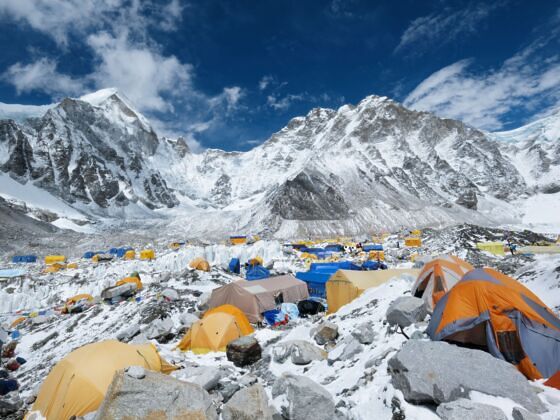Mount Everest is the tallest mountain on Earth and sits on the border of Nepal and Tibet, an independent region of China. While you can climb it from either side, most climbers make the approach from the Nepalese side. And unfortunately, that’s created a large problem for the Chinese government and Nepalese government and volunteers: cleaning up the massive amounts of waste on Mount Everest left behind by the mountain’s significant annual number of climbers.


Mount Everest Is Finally Addressing Its Enormous Poop Problem
Approximately 800 people attempt to summit Mount Everest each year, stopping at four camps along the way to acclimate. Climbers stay anywhere from 25 to 35 days on the mountain, and since the first commercial climbing operation began in 1992, there have been a few decades of the mountain welcoming a steady stream of climbers. That’s created a host of safety and environmental concerns, ranging from crowds on the former “Hillary Step” to piles of plastic left behind to one unavoidable issue: human excrement on Mount Everest.

Waste on Mount Everest generated at the various base camps is a significant problem. Photo: Daniel Prudek/Shutterstock
But this year, the government of Nepal is taking steps to address the issue of human waste on Mount Everest, which estimates suggest could be around 26,000 pounds annually. Starting in 2024’s climbing season, which begins mid-April, everyone on the mountain will be required to carry, use, and carry out designated poop bags. (China attempted a similar policy in 2019). The Sagarmatha Pollution Control Committee in charge of the project told the BBC that it estimates about 8,000 bags will be used in the coming climbing season, each of which can be used several times. The bags are primarily for use on the higher sections of the mountains, as guiding companies at the lower base camps usually erect their own tented toilettes for clients.
Human waste on Mount Everest causes a host of problems, aside from the unpleasantness of climbing next to a steady trail of frozen poop. It creates significant odors, especially in areas that aren’t permanently covered in snow or are prone to freeze-and-thaw cycles. It can also compromise the water supply relied on by locals and villages in the remote, developing towns around the base.
The initiative is part of a greater multi-year push from governments and non-profits alike to encourage climbers to be more conscious of their ecological footprints while on Everest. The Mountain Cleanup Campaign, a non-profit partnership between the Nepalese Army and major western brands like London-based brand Unilever and Coca-Cola, has collected approximately 110 tons of trash from the mountain since 2019.
The next clean up will being mid-April 2024, with nearly two dozen volunteers lined up to remove both trash, as well as five bodies of climbers who died en route. More than 200 bodies are believed to remain on the mountain, according to the experts at Climbing Kilimanjaro. Bodies are left behind when they’re in areas where retrieval is too difficult, or die in conditions where sending in rescuers or retrieval teams would be unsafe. That’s the rational behind a second change for this climbing season reported by CNN: climbers will be required to wear GPS tracking devices to make it easier for rescuers in case of emergencies.